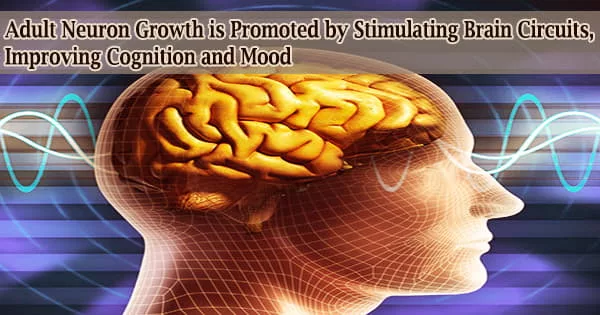Serotonin, a neurotransmitter, is important in both the onset and unlearning of fear and anxiety. A research group has been looking into the underlying mechanisms. The scientists discovered that mice lacking a specific serotonin receptor unlearn fear much faster than wild-type mice. The study’s findings offer a plausible explanation for how drugs commonly used to treat post-traumatic stress disorder (PTSD) alter our brain activity. In PTSD patients, the ability to unlearn fear is frequently impaired, making therapies more difficult to implement.
The absence of a specific serotonin receptor helps to reduce previously learned fear responses.
Serotonin, a neurotransmitter, is important in both the onset and unlearning of fear and anxiety. A research team led by Dr. Katharina Spoida and Dr. Sandra Süß from the Department of General Zoology and Neurobiology at Ruhr University Bochum, Germany, has been investigating the underlying mechanisms.
The scientists discovered that mice lacking a specific serotonin receptor unlearn fear much faster than wild-type mice. The study’s findings offer a plausible explanation for how drugs commonly used to treat post-traumatic stress disorder (PTSD) alter our brain activity. In PTSD patients, the ability to unlearn fear is frequently impaired, making therapies more difficult to implement. The study was published in the journal Translational Psychiatry.
We discovered that knock-out mice learned much faster that tone does not predict fear stimulus than mice that did not have this specific genetic modification. As a result, it appears that the absence of the serotonin receptor benefits extinction learning.
Katharina Spoida
Fear responses triggered by everyday sensory input
People who have been through a traumatic experience may experience a long-term exaggerated fear response. In such cases, the fear response is triggered by sensory impressions that occur in our everyday environment and can become overwhelming. Post-traumatic stress disorder is the term used by experts to describe this condition (PTSD). It is impossible, or only difficult, for affected individuals to unlearn the once-learned link between a neutral environmental stimulus and the learned fear response in this disorder, which limits the effectiveness of therapies.
Knowing that the neurotransmitter serotonin plays an important role in the development of fear, the research team investigated its role in extinction learning, or the unlearning of fear, in greater depth. To that end, they studied so-called knock-out mice, which are genetically modified to lack a specific serotonin receptor, the 5-HT2C receptor. In one day, these mice learned to associate a specific sound with a mild but unpleasant electrical stimulus. “As a result of this learning process, they showed a fear response the next day that was characterized by a motionless pause as soon as the tone was played, which we refer to as ‘freezing,'” explains Katharina Spoida.

Absence of the receptor is an advantage
The researchers then played the tone to the mice repeatedly without applying the electrical stimulus. “We discovered that knock-out mice learned much faster that tone does not predict fear stimulus than mice that did not have this specific genetic modification,” says Katharina Spoida. “As a result, it appears that the absence of the serotonin receptor benefits extinction learning.”
The researchers investigated this phenomenon in more detail and found that the knock-out mice showed changes in their neuronal activity in two different brain areas. One of these is a specific sub-region of the dorsal raphe nucleus (DRN), which is typically the main site of serotonin production in our brains. In addition, the researchers discovered aberrant neuronal activity in the so-called bed nucleus of the stria terminalis (BNST), which is a part of the so called extended amygdala.
“In the knock-out mice, we first found increased basal activity in certain serotonin-producing cells of the dorsal raphe nucleus. In a subsequent step, we showed that the absence of the receptor also alters neuronal activity in two subnuclei of the BNST, which ultimately supports extinction learning,” describes first author Sandra Süß. The research results also indicate a connection between the two brain regions, which leads the scientists to assume that an interplay is significant for improved extinction learning.
Possible effect of medication revealed
The study’s findings could shed light on how drugs commonly used to treat PTSD affect the brain regions examined in this study. “There are already drugs in clinical use that regulate the amount of available serotonin, known as selective serotonin reuptake inhibitors, or SSRIs for short,” Katharina Spoida points out.
“When these drugs are taken for an extended period of time, the relevant receptor becomes less responsive to serotonin, similar to our knock-out model. As a result, we believe that the changes we’ve described are necessary for SSRIs to have a positive effect” Sandra Süß adds. The researchers hope that their findings will aid in the future development of more targeted treatment strategies for PTSD patients.
















